-
New York overhauls emergency response capabilities post-Irene
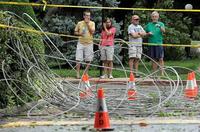
Last week New York Governor Andrew Cuomo proposed a series of major initiatives to bolster the state’s emergency response capabilities; the proposals specifically incorporate lessons learned from the state’s response to Hurricane Irene and Tropical Storm Lee
-
-
London holds massive Olympic security drill
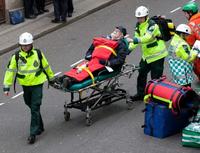
Last week, in preparation for the London 2012 Olympic Games, more than 2,500 government officials, local police, and emergency responders participated in a two-day long emergency drill that simulated a terrorist attack on the city’s transportation network
-
-
Union University bolsters emergency response with GPS 911 system
In an effort to bolster its emergency response capabilities Union University in Tennessee recently installed an enhanced 911 system
-
-
9/11 first responders face three times the cancer rate
A new study found that 9/11 first responders have been diagnosed with cancer-related illnesses at three times the rate of unexposed workers
-
-
Compact helmet-display for first responders

Engineers at Physical Optics Corp. are working with DHS’ Science and Technology Directorate (S&T) to develop a helmet-mounted micro display system for first responders designed to improve their situational awareness
-
-
Wireless underground robots for first responders
First responders may have to look for victims in hostile or challenging environments, such as clandestine tunnels, subway systems, and underground structures; sending a wireless robot to look around and pull victims out would be safer
-
-
Fort Wayne Mayor dissolves joint homeland security department
After six years of operation, the joint Fort Wayne-Allen County Homeland Security Department has been dissolved; last week Tom Henry, the Mayor of Fort Wayne, Indiana sent a letter to county officials notifying them of the city’s plans to end its agreement to share in the costs of the local homeland security department
-
-
Foul odor-blocking for first responders
First responders often find themselves working under unpleasant circumstances in places; a California company is offering first responders relief from at least one of these unpleasant exposures: offensive odor
-
-
Running robots for hard-to-reach places
A large fraction of the Earth’s surface remains inaccessible to conventional wheeled or tracked vehicles, while animals and humans traverse such terrain with ease and elegance; scientists are working to develop search-and-rescue robots which emulate animal or human walking, thus making them more capable of saving people in hard-to-reach places
-
-
Recommended emergency response technology from Seattle’s CTO
Following the rare four-day snowstorm that left Seattle, Washington blanketed in snow, Bill Schrier, the city’s chief technology officer, weighed in on the city’s response and offered tips on how to better implement technology in the future
-
-
First responders could be zipping through skies within two years
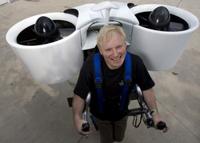
Glenn Martin, the inventor of the Martin Jetpack, the world’s first commercially available jetpack, recently spoke with Homeland Security NewsWire’s executive editor Eugene K. Chow; in their interview Martin discusses the technical challenges of developing a viable jetpack, its uses in emergency response, and when we can expect to see civilians zipping through the skies
-
-
Smart911 technology improves 9-1-1- response
Municipalities improve 9-1-1 response with Smart911; the technology allows individuals to use a Web site to enter emergency-relevant information they want emergency personnel answering a 9-1-1 call to have, including children’s photos, medical conditions, disabilities, home addresses of cellphone callers, or other rescue-related information
-
-
New robot for search-and-rescue missions
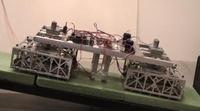
Scientists say the best way to design a new machine is to emulate the locomotion of a certain type of flexible, efficient animal
-
-
Link found between PTSD, respiratory illnesses in 9/11 responders
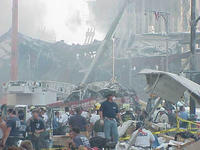
A new study finds that there are links between respiratory illnesses and post-traumatic stress disorder (PTSD) in 9/11 first responders; “This study illustrates the integral relationship between mental health and physical diseases that WTC responders suffer,” one of the researcher says
-
-
ETC launches new SmartModel technology
The new SmartModel technology consists of a library of 3D objects and elements that can be inserted into a Master Scenario Events List (MSEL) exercise scenario; the SmartModel library currently contains various intelligent elements including vehicles, crowds, casualties, threats, and hazards
-
- All
- Regional
- Water
- Biometrics
- Borders/Immig
- Business
- Cybersecurity
- Detection
- Disasters
- Government
- Infrastructure
- International
- Public health
- Public Safety
- Communication interoperabillity
- Emergency services
- Emergency medical services
- Fire
- First response
- IEDs
- Law Enforcement
- Law Enforcement Technology
- Military technology
- Nonlethal weapons
- Nuclear weapons
- Personal protection equipment
- Police
- Notification /alert systems
- Situational awareness
- Weapons systems
- Sci-Tech
- Sector Reports
- Surveillance
- Transportation
Advertising & Marketing: advertise@newswirepubs.com
Editorial: editor@newswirepubs.com
General: info@newswirepubs.com
2010-2011 © News Wire Publications, LLC News Wire Publications, LLC
220 Old Country Road | Suite 200 | Mineola | New York | 11501
Permissions and Policies
Editorial: editor@newswirepubs.com
General: info@newswirepubs.com
2010-2011 © News Wire Publications, LLC News Wire Publications, LLC
220 Old Country Road | Suite 200 | Mineola | New York | 11501
Permissions and Policies
